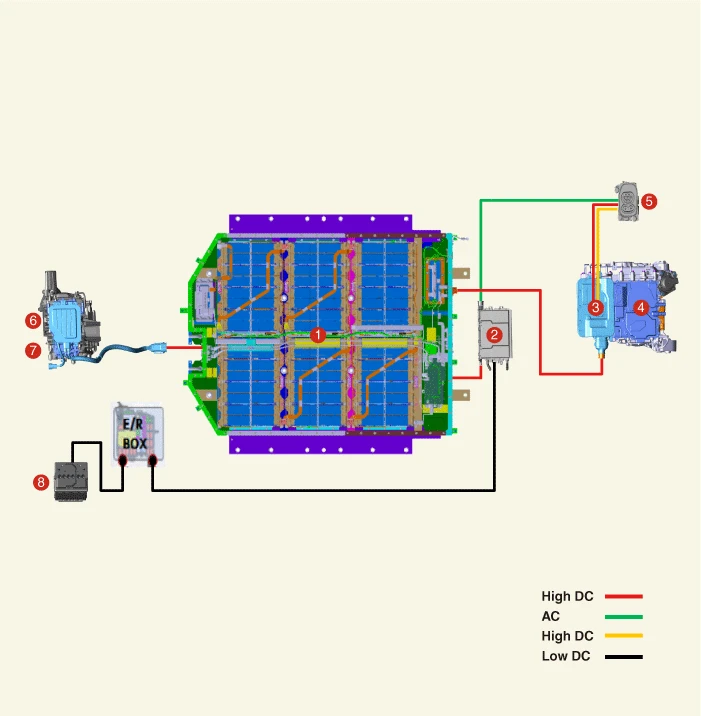Description
• An electric vehicle (EV) is not a system obtaining power through an engine, such as an internal combustion engine, but a system supplying electric power from high voltage battery for driving the motor.
• The battery control system is a system that optimizes the state of the battery and performs various controls to minimize the risk of the battery in abnormal situations when performing functions such as supplying power for driving a vehicle and supplying power consumed indoors. Moreover the battery situation is continuously monitored.
• In addition to controlling the charge and discharge speed of the battery, the system could detect a cell voltage, a cell temperature, and a battery current from a sensor to extend the life of the battery and improve the battery performance.
Battery Control System Function
• It receives battery status information from various sensors of electric vehicle to prevent a failure due to a battery abnormality.
• It receives the charging voltage of the battery for each cell and detects the charging state and the internal state of the battery.
• Where a difference in charging voltage occurs for each cell inside a battery, the voltage deviation between the cells is reduced through cell balancing.
• When a battery is found to be abnormal, if there is a risk due to an increase in the internal load of the battery, the main relay circuit is blocked to prevent safety accidents.
• When charging and discharging a battery, the temperature of each cell inside the battery is detected and the battery state is continuously checked through CAN communication.
• The charge and discharge voltages according to the cell voltage are controlled.
• When the internal temperature of the battery rises, the internal temperature of the battery is controlled to an optimal level through cooling water and air conditioning refrigerant.
System Component
• High Voltage Battery System Assembly (BSA) : It consists of six sub battery pack assemblies and it stores/supplies the electrical energy required to drive the vehicle.
• High Voltage Battery Control System : It consists of the Battery Management Unit (BMU), the Cell Monitoring Unit (CMU), the Power Relay Assembly (PRA), and controls the State of Charge (SOC), output, fault diagnosis, battery cell balancing, power supply or shutdown in battery system.
• High Voltage Charging System : It consists of an integrated charging control unit (ICCU) which is the integrated unit of the On-Board Charger (OBC) and the Low-voltage DC/DC Converter (LDC), the charging door assembly, and the combo charging inlet assembly.
• High Voltage Distributing System : It consists of a high voltage junction box and a high voltage power cable that supplies the power supplied from the high voltage battery to each component.
• Electric Power Conversion System : It is a system that converts power according to its use. (AC/DC ↔ DC/AC)
High Voltage Circuit Composition

1. Battery System Assembly (BSA)
2. Integrated Charge Control Unit (ICCU)
3. Rear High Voltage Junction Box
4. Multi Inverter Assembly
5. Combo Charger Inlet Assembly
6. Front High Voltage Junction Box
7. Inverter Assembly (4WD)
8. Auxiliary 12 V Battery